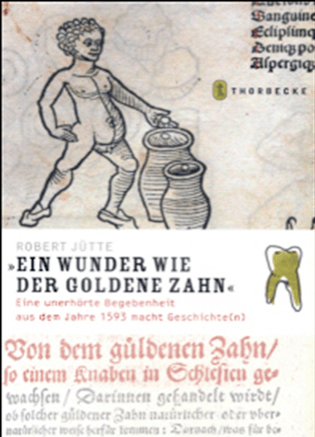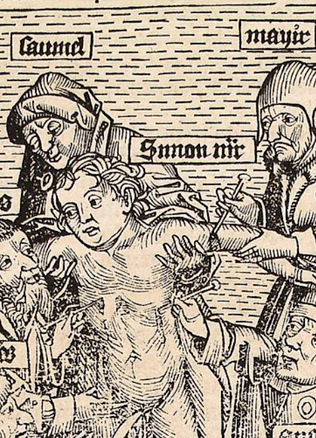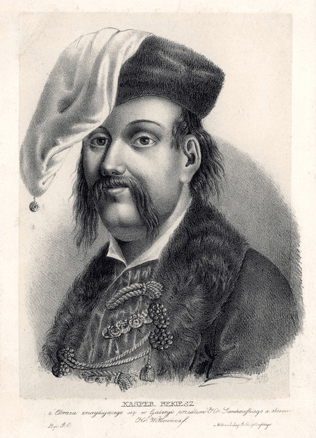Where We Came From: The Myth of the Roman Lineage of Lithuanians
A gift of origins devised by the ingenuity of medieval chroniclers
The theory that the Lithuanians originated from the Romans was written down for the first time in the Lithuanian Chronicles at the beginning of the 16th century. The idea about Lithuanians possibly coming from the Romans came earlier to authors of other countries. With the spirit of science at the time, they tried to explain the origins of a new nation that had been accepted into the Christian world. They were not able to find anything in known sources, which is why they had to employ the use of a few tried and true methods of explaining a nation’s origins.
There were few geographical places that were acceptable for a venerable lineage during the Middle Ages. The main place was Rome. They also liked to trace back a nation’s origins to Troy, Sarmatia, and areas where the military exploits of Alexander the Great took place.
Do You Know?
An example of this kind of learned explanation could be the attempt of early 15th century German chronicler Dietrich from Nieheim to determine the origins of the Samogitians that had interested him at the Council of Constance: in his chronicle while describing the wars of the Franks and Saxons, he put forth an idea that a part of the Saxons, not wanting to surrender to the leaders of the Franks, left and settled in Samogitia. As the Saxons were said to originate from the soldiers of Alexander the Great, the Samogitians could be treated as distance descendants of these soldiers. This story says nothing about how the Samogitians understood their identity, however it reflects well the medieval way of thinking about history at a time when nations and families were derived from a few places marked with a reputable past without second thought.
In creating the theory of Lithuanians originating from the Romans, authors of the 16th century Lithuanian Chronicles were able to adopt one kind of historical plotline that had recently become widespread in European works. Contrary to later historical tales (which were no less fictitious), the inseparable ties of nation and place were accentuated, as during the Middle Ages there was a desire to link oneself with other, more ancient nations and at the same time harmonize one’s own history with the history of other nations. They did not look for originality, but for continuity, while a venerable beginning was a precondition for a future political role. The image of Rome was the best fit for this task. The primary motif of this story was a journey or move and the birth of a new nation in a new geographical location.
Lithuanians: dissidents from Ancient Rome
The myth of Lithuanians originating from the Romans was moved to the times of Emperor Nero (according to another version, to the years of Attila the Hun’s invasion of the Roman Empire), when the Roman Prince Palemon and 500 royal families, who had had enough of Nero’s rule, left the Eternal City together with their families (“four Roman patrimonial families: of the Centaur coat-of-arms, the Columns coat-of-arms, the Bear coat-of-arms and the Rose coat-of-arms ) and after a long journey by sea and ocean stopped at the shores of the Baltic Sea. This is how the history of the Lithuanian dukes and nobility began.
The Roman beginnings of Lithuanian history solved two important historical issues, giving a well-respected location among other European nations to the Lithuanians, and linked their history with events of Antiquity and the history of Christianity.
Realia of the present moved to the distant past
This theory of origin also reflects the then-changes in Lithuanian society and a new kind of understanding of history that was being born. The most influential noble families of the GDL at the beginning of the 16th century made efforts to create political and ideological room for the entrenchment of their growing power. Thanks to the theory of Roman origins, the Gasztold, Holszansky, Radziwiłł, and other noble families received a historical tradition that suited their political power, which were Roman forefathers that accompanied Palemon on his journey. This tradition moved the main values and relations of the 16th century to the distance past, giving a historical basis for the nobles’ domination in GDL society.
The standpoint of the time dictated that the only thing that was legitimate was what had a beginning, a tradition. A beginning that was not found in sources had to be created, moving the realia of the present to the past. This is why the Gasztold, Monwid, Dowojno, Holszansky, and Giedroyć began appearing in the section of chronicles that dealt with legends describing ancient Lithuanian history, because according to the chroniclers, the land that these families owned in the 15th and 16th centuries had been their land already in ancient times. If Jan Gasztold was the Vilnius voivode in the 15th century, and his grandson Albert had hopes of becoming the voivode, then it would be correct to assume that their legendary forefather Piotr Gasztold also held this post during the times of Algirdas. This also revealed ties with other venerable families of Europe, after all, the Gasztold and Dowojno traced their origins back not only to the Roman Colonna and Orsini families, but also royal and princely German and Czech families as well as royal families of other nations.
Myths of the past the needs of the present
However, the Roman theory not only explained the origins of Lithuanian rulers and nobles.
The story, born in the intellectual environment of the GDL chancery from a learned theory, became a legend, because it answered essential cultural and social questions at the time.
It created a map of what one could call the “political geography” of the GDL: while travelling and establishing new cities and castles from Samogitia and Jurbarkas to Podolia and Ukraine, the legendary Lithuanian dukes marked a territory, the preservation of which was a relevant problem for them in the 16th century. The change of the Palemon, Centaur and Columns dynasties that were described in the legend-like part of the chronicles created an impression that the dying out of a specific family of the ruler didn’t stop the regular course of history, while the nobles always played an important role alongside the rulers. This theory laid the ideological basis for the integration of the Ruthenian boiar class: it allowed the Chodkiewicz, Sapiehas, Tyszkiewicz and other GDL Russian Orthodox believers to also feel like “Roman Lithuanians” like the Catholic Gasztold, Radziwiłł, and Kiesgajlo. After all, the ancestors of all of them were among the 500 people of nobility that accompanied Palemon from Rome to the shores of the Baltic Sea. It was only later political events that separated this group of people through the wide expanses of the duchy, which was growing.
Afterwards the theory of Lithuanians coming from the Romans became the main plotline of Lithuanian history and cornerstone of Lithuanian identity for a very long time. The political order that was forming in the GDL needed an identity, for which the best idea was that of a common destiny. For the political order of nobles, the Lithuanian chronicles and theory of Lithuanians coming from the Romans explained their roots, established it as an equal among the nations of the world and gave them weighty historical arguments for future political conflicts. As one of the Radziwiłłs would later say: “I am a Roman.”
Literature: Lietuvos metraštis: Bychovco kronika, vertė Rimantas Jasas, Vilnius, 1971
Rimvydas Petrauskas



